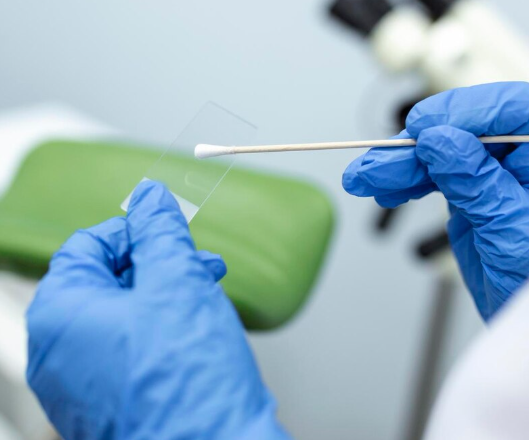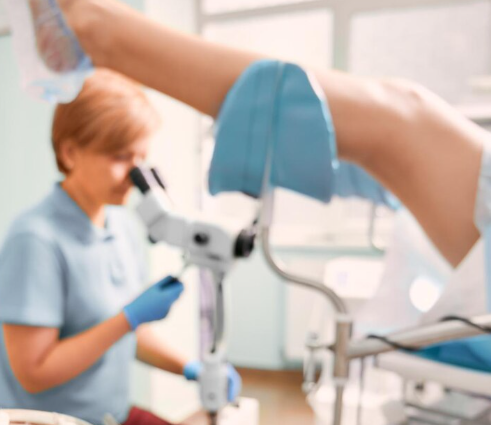Treatment Overview
Microsurgical Fibroid Removal Treatment in Korea is a highly advanced, fertility-preserving surgical option designed to treat uterine fibroids with unmatched precision. Using state-of-the-art microsurgical techniques, Korean gynecologic specialists carefully excise fibroids while protecting healthy uterine tissue and reproductive function. This procedure is a leading example of Korea’s innovation in minimally invasive gynecologic surgery.
Uterine fibroids — benign tumors of the uterine muscle — are a common condition affecting women worldwide. They can cause heavy menstrual bleeding, pelvic pain, infertility, and pressure on adjacent organs. Microsurgical fibroid removal in Korea addresses these challenges by combining delicate microsurgical techniques, high-resolution imaging, and specialized tools to provide optimal outcomes with minimal complications.
Korean hospitals such as Samsung Medical Center, Asan Medical Center, Severance Hospital, CHA Bundang Women’s Hospital, and Ewha Womans University Mokdong Hospital are renowned for their expertise in microsurgical myomectomy. These institutions utilize advanced technology, meticulous surgical planning, and patient-centered care to deliver superior results.
Purpose & Benefits
The primary purpose of microsurgical fibroid removal is to offer a precise, minimally invasive treatment that preserves uterine structure and function. This technique is especially important for women who wish to maintain fertility while eliminating fibroid-related symptoms.
Key benefits include:
- Microscopic Precision: Surgeons use high-powered magnification to carefully remove fibroids while preserving surrounding uterine tissue.
- Fertility Preservation: Maintains uterine integrity, supporting future pregnancy plans.
- Minimal Blood Loss: Microsurgical techniques reduce intraoperative bleeding.
- Reduced Recovery Time: Smaller incisions and precise techniques lead to faster healing.
- Low Risk of Adhesions: Enhanced visualization minimizes unnecessary tissue damage.
- Minimal Scarring: Microsurgery requires very small incisions, promoting better cosmetic outcomes.
- Short Hospital Stay: Most patients are discharged within 24–48 hours after surgery.
Korean microsurgical fibroid removal integrates advanced technology with highly specialized surgical skill, ensuring safe and effective treatment for women with fibroids.
Ideal Candidates
Microsurgical fibroid removal is suitable for women who need precise excision of fibroids and desire fertility preservation. Ideal candidates include:
- Women with symptomatic fibroids causing heavy menstrual bleeding, pelvic discomfort, or pressure symptoms.
- Patients with fibroids located in sensitive areas of the uterus.
- Women who wish to maintain or improve fertility.
- Patients preferring minimally invasive procedures with rapid recovery.
- Women who require customized surgical planning based on their condition.
Korean hospitals conduct thorough preoperative evaluations, including high-resolution ultrasound, MRI scans, and laboratory tests, to develop a personalized microsurgical plan.
Possible Risks & Complications
Microsurgical fibroid removal is generally very safe, but patients should be aware of potential risks:
- Bleeding: Rare but possible, especially with larger fibroids.
- Infection: Low risk due to sterile surgical procedures.
- Adhesion Formation: Reduced with microsurgical precision but not entirely avoidable.
- Damage to Surrounding Tissue: Rare but possible, minimized by enhanced magnification and technique.
- Fibroid Recurrence: Possible, although complete removal minimizes the risk.
Korean surgical teams mitigate these risks through advanced surgical technology, meticulous planning, and structured postoperative care.
Techniques Used
Microsurgical fibroid removal in Korea employs several advanced techniques to ensure safety and precision:
- Microscopic Visualization: High-powered optical magnification enables precise identification and removal of fibroids.
- Laparoscopic Assistance: Combines microsurgery with minimally invasive laparoscopy for optimal results.
- Ultrasound Guidance: Real-time imaging ensures accurate localization and excision of fibroids.
- Precision Suturing: Maintains uterine structure and supports reproductive health.
- Minimally Invasive Access: Small incisions for reduced pain, minimal scarring, and quicker recovery.
These approaches ensure a tailored and precise treatment that maximizes surgical outcomes.
Recovery & Aftercare
Recovery following microsurgical fibroid removal is generally faster and less painful compared to traditional myomectomy. Most patients return to normal activities within one to two weeks.
Aftercare includes:
- Monitoring healing and uterine health through follow-up visits.
- Personalized pain management.
- Lifestyle and diet recommendations to support recovery.
- Fertility counseling for patients planning pregnancy.
- Imaging follow-up to confirm successful removal and monitor for recurrence.
Korean hospitals provide a holistic aftercare program to ensure the patient’s long-term well-being and satisfaction.
Results & Longevity
Microsurgical fibroid removal delivers durable relief from fibroid-related symptoms while preserving fertility. Korean medical centers report high success rates, minimal complications, and low recurrence.
Long-term benefits include normalized menstrual cycles, relief from pelvic discomfort, improved fertility outcomes, and an enhanced quality of life, making microsurgical fibroid removal one of the most advanced options for women seeking fibroid treatment.
Treatment Process in Korea
- Consultation: Comprehensive evaluation of medical history, symptoms, and diagnostic imaging.
- Preoperative Planning: Personalized surgical approach tailored to fibroid size, location, and patient needs.
- Surgical Procedure: Minimally invasive microsurgical removal of fibroids.
- Recovery: Structured postoperative care to ensure comfort and rapid healing.
- Follow-Up: Imaging and consultations to confirm success and monitor uterine health.
Korean hospitals ensure this process is patient-focused, efficient, and precise.
Cost Range
The cost of microsurgical fibroid removal in Korea depends on procedure complexity and hospital reputation:
- Standard Microsurgical Myomectomy: ₩6,000,000 – ₩10,000,000 KRW ($4,500 – $7,500 USD)
- Robotic Microsurgical Myomectomy: ₩10,000,000 – ₩15,000,000 KRW ($7,500 – $11,300 USD)
- Single-Port Microsurgery: ₩8,500,000 – ₩13,000,000 KRW ($6,400 – $9,800 USD)
These prices reflect Korea’s advanced surgical expertise, precision technology, and exceptional patient care.
Popular Clinics for Microsurgical Fibroid Removal in Korea
- Samsung Medical Center – Leaders in microsurgical gynecologic procedures with precision technology.
- Asan Medical Center – Experts in fertility-preserving fibroid surgery.
- Severance Hospital – Known for advanced microsurgical myomectomy.
- CHA Bundang Women’s Hospital – Pioneers in customized minimally invasive gynecologic surgery.
- Ewha Womans University Mokdong Hospital – Combines innovative surgical technology with holistic patient care.




